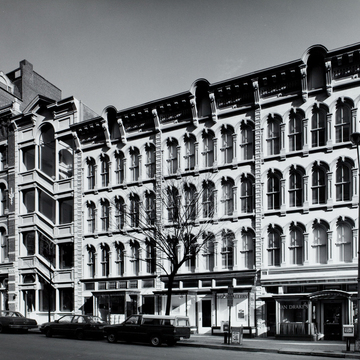The Downtown Historic District incorporates many of the oldest commercial buildings in Downtown East, which clustered along 7th Street. Seventh Street emerged as a major commercial artery in the District of Columbia because it connected the Washington City Canal and the markets between 7th and 9th streets with the agricultural lands in the District beyond Boundary Street (Florida Avenue) and Maryland. F Street marked a plateau safe from the floods on the land rising to the north from Pennsylvania Avenue.
The Downtown Historic District includes major public and private buildings such as the Patent Office Building (see DE15.2), the United States General Post Office (see DE15.3), and the former Washington Loan and Trust Company (see DE15.5), but it is characterized more by anonymous low-rise commercial architecture of the mid-nineteenth to the early twentieth centuries, fragile survivors in an area undergoing redevelopment.
An example is the Germond Crandell Building ( DE15.1) of 1877, designed by architect Germond Crandell and recycled as Gallery Row in the 1980s by Hartman-Cox.






